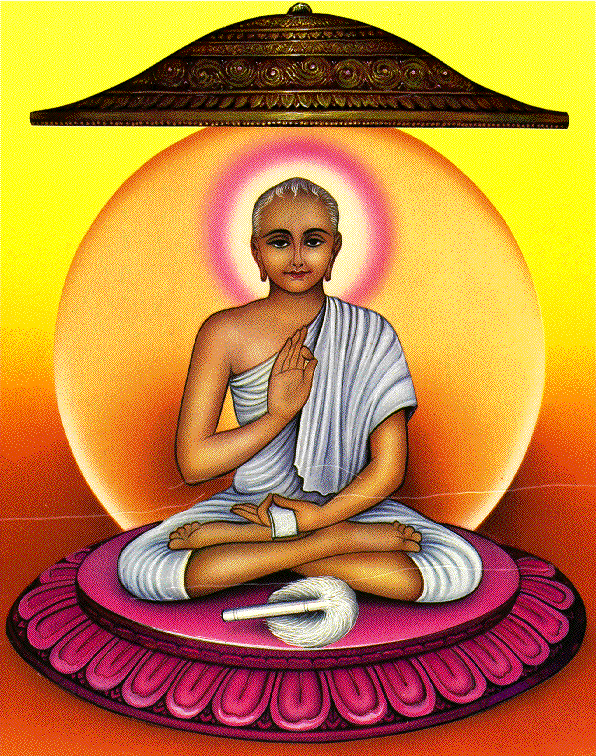The Jain Symbols is a collection of a number of different symbols, each of which has a deeper meaning. For the purpose of commemorating the 2500th anniversary of Lord Mahavira’s nirvana, this symbol was adopted by all Jainism sects.

The universe is depicted by the symbol’s outline (Lok). The seven hells (Naraki) are depicted in the lower part of the symbol. Earth and the planets are located in the middle of the universe (Manushyalok). The Siddhas’ home (Siddhashila) and the heavenly abodes (Devlok) of all celestial beings can be found in the upper part. According to the Jains, this universe was neither created nor destroyed by anyone. It might take on a new shape, but in all other respects, it has always been here and will always be.
The raised hand indicates a halt. “Ahimsa” is the word in the center of the wheel. The word ahimsa means nonviolence. They both remind us to pause for a moment and consider our options carefully before acting. This allows us to examine our actions to ensure that they will not harm anyone through our words, actions, or thoughts. Additionally, we are prohibited from asking or encouraging others to engage in any harmful activity. The hand-held wheel demonstrates that, just like the wheel goes around and around, we will go through the cycles of birth and death if we are not careful, ignore these warnings, and engage in violent activities.
The swastika’s four arms serve as a reminder to us that during the cycles of birth and death, we can be born into any one of the following four destinies: beings from heaven, humans, animals (including birds, insects, and plants), and hellish beings Our objective ought to be liberation, not rebirth. The swastika demonstrates this by reminding us that only by becoming the pillars of the fourfold Jain Sangh can we achieve liberation. The Jain Sangh is built on four pillars: sädhus, sädhvis, shrävaks, and shrävikäs. This indicates that in order to be liberated, we should first strive to be true shrävaks or shrävikäs. Once we are able to break free of our social attachments, we should give up the worldly life and follow the path of a sädhu or sädhvi.
The three gems of Jainism are represented by the three dots above the swastika: Samyak Darshan, Samyak Jnan, and Samyak Charitra all stand for righteous conduct. We ought to possess all three: only by combining right knowledge, right faith, and right behavior can we achieve liberation. Having the knowledge that the soul and the body are distinct and that salvation is won by the soul rather than the body is the right knowledge. One must have faith in what the omniscient Jinas say in order to have the right faith. Our actions ought to be free of attachment and animosity, which is the definition of good behavior.
A small curved arc can be seen at the very top of the Jain Universe symbol. The Siddhas’ home is depicted by this arc. The Siddhashila is the name of it. The liberated souls’ final resting place is here. Siddha is represented by the dot. A soul must eliminate all associated karmas in order to reach this stage. This state of liberation or salvation should be the goal of every living thing.





